Originally written in 2015 for the 70th anniversary; updated in 2020 for the 75th anniversary; reposted below along with this podcast for the 79th anniversary.
It Should Never Be Done Again: Hiroshima, 75 Years Later
August 6, 1945. Hiroshima. A Japanese city roughly the size of Houston. Incinerated by the first atomic bomb. Three days later, Nagasaki. Japanese surrender followed. It seemed the bombs had been worth it, saving countless American (and Japanese) lives, seeing that a major invasion of the Japanese home islands was no longer needed. But was the A-bomb truly decisive in convincing the Japanese to surrender?
President Truman’s decision to use atomic bombs against Japan is perhaps the most analyzed, and, in the United States, most controversial decision made during World War II. The controversy usually creates more heat than light, with hardliners posed on mutually opposed sides. The traditional interpretation is that Truman used the A-bombs to convince a recalcitrant Japanese Emperor that the war was truly lost. A quick Japanese surrender appeared to justify Truman’s choice. It also saved tens of thousands of Allied lives in the Pacific (while killing approximately 250K Japanese). This thesis is best summed up in Paul Fussell’s famous essay, “Thank God for the Atomic Bomb.”
Even before Hiroshima, however, a small number of scientists argued that the A-bomb should not be used against Japan without a prior demonstration in a remote and uninhabited location. Later, as the horrible nature of radiation casualties became clearer to the American people, and as the Soviet Union developed its own arsenal of atomic weapons, threatening the United States with nuclear Armageddon, Americans began to reexamine Truman’s decision in the context of the Cold War and the nuclear arms race. Gar Alperovitz’s revisionist view that Truman was practicing “atomic diplomacy” won its share of advocates in the 1960s. (Alperovitz expanded upon this thesis in the 1990s.) Other historians suggested that racism and motives of revenge played a significant role in shaping the U.S. decision. This debate reached its boiling point in the early 1990s, as the Smithsonian’s attempt to create a “revisionist” display to mark the bomb’s 50th anniversary became a lightning rod in the “culture wars” between a Democratic administration and a resurgent Republican Congress.
Were the atomic bombs necessary to get the Japanese to surrender? Would other, more humane, options have worked, such as a demonstration to the Japanese of the bomb’s power? We’ll never know with certainty the answer to such questions. Perhaps if the U.S. had been more explicit in their negotiations with Japan that “unconditional surrender” did not mean the end of Japan’s Emperor, the Japanese may have surrendered earlier, before the A-bomb was fully ready. Then again, U.S. flexibility could have been interpreted by Japanese hardliners as a sign of American weakness or war fatigue.
Unwilling to risk appearing weak or weary, U.S. leaders dropped the A-bomb to shock the Japanese into surrendering. Together with Stalin’s entry into the war against Japan, these shocks were sufficient to convince the Japanese emperor “to bear the unbearable,” in this case total capitulation, a national disgrace.
A longer war in the Pacific — if only a matter of weeks — would indeed have meant higher casualties among the Allies, since the Japanese were prepared to mount large-scale Kamikaze attacks. Certainly, the Allies were unwilling to risk losing men when they had a bomb available that promised results. The mentality seems to have been: We developed it. We have it. Let’s use it. Anything to get this war over with as quickly as possible.
That mentality was not humane, but it was human. Truman had a weapon that promised decisiveness, so he used it. The attack on Hiroshima was basically business as usual, especially when you consider the earlier firebombing raids led by General Curtis LeMay. Indeed, such “conventional” firebombing raids continued after Hiroshima and Nagasaki until the Japanese finally sent a clear signal of surrender.
Of course, an event as momentous, as horrific, as Hiroshima took on extra meaning after the war, given the nuclear arms race, the Cold War and a climate represented by the telling acronym of MAD (mutually assured destruction). U.S. decisionmakers like Truman were portrayed as callous, as racist, as war criminals. Yet in the context of 1945, it’s difficult to see any other U.S. president making a different decision, especially given Japan’s apparent reluctance to surrender and their proven fanaticism at Iwo Jima, Okinawa and elsewhere.
As Andrew Rotter notes in Hiroshima: The World’s Bomb (2008), World War II witnessed the weakening, if not erasure, of distinctions between combatants and non-combatants, notably during LeMay’s firebombing of Tokyo in March 1945 but in many other raids as well (Rotterdam and Coventry and Hamburg and Dresden, among so many others). In his book, Rotter supports the American belief that Japan would fight even more fanatically for their home islands than they did at Iwo Jima and Okinawa, two horrendous battles in 1945 that preceded the bomb. But he argues that Truman and Secretary of War Henry Stimson engaged in “self-deception” when they envisioned that the effects of the atomic bomb could be limited to “a purely military” target.
A quarter of a million Japanese died at Hiroshima and Nagasaki and in the years and decades following. They died horrible deaths. And their deaths serve as a warning to us all of the awful nature of war and the terrible destructiveness of nuclear weapons.
Hans Bethe worked on the bomb during the Manhattan Project. A decent, humane, and thoughtful man, he nevertheless worked hard to create a weapon of mass destruction. His words of reflection have always stayed with me. They come in Jon Else’s powerful documentary, “The Day After Trinity: J. Robert Oppenheimer and the Atomic Bomb.”
Here is what Bethe said (edited slightly):
The first reaction we [scientists] had [after Hiroshima] was one of fulfillment. Now it has been done. The second reaction was one of shock and awe: What have we done? What have we done. The third reaction was it should never be done again.
It should never be done again: Just typing those words here from memory sends chills up my spine.
Let us hope it is never done again. Let us hope a nuclear weapon is never used again. For that way madness lies.
Here are two comments I made in response to previous comments on this article:
1.
I think the comments once again show that no consensus is possible on whether the atomic bombs were decisive in ending the war sooner. Even well-informed people at the time disagreed.
Again, I return to the context of August 1945. A war-weary America, facing the prospect of a delayed Japanese surrender, was using every weapon at its disposal to drive the Japanese into the ground. That included blockade, firebombing, and invasions (Iwo Jima and Okinawa). A longer blockade and more Japanese would have starved. More firebombing, more dead Japanese. More invasions, more dead Japanese, and of course Allied troops as well. The Japanese were well indoctrinated to fall in battle like cherry blossoms in the service of the emperor, whom they viewed as a god.
How to get a Japanese leadership and people to surrender when they saw the very act as dishonorable to the warrior code of Bushido? How to persuade a military that was already committing suicide on a massive scale in Kamikaze attacks against Allied ships to capitulate and live on with the shame of defeat?
It’s clear from the evidence that Truman believed the atomic bomb would shock the “beast” of Japan (“beast” was Truman’s word, a description that Allied soldiers and other Asian peoples who suffered at the hands of Japan, e.g. the Chinese, the Vietnamese, the Koreans, would have agreed with). It surely did shock them. Profoundly. Was it sufficient? Was it necessary?
Again, there is no alternate reality in which the atomic bomb wasn’t dropped, and thus no way of knowing whether in that other reality, the Japanese would have agreed to surrender on August 15th.
2.
My reading of the evidence is that impressing the Soviets was a factor, but not THE factor, in the decision to use the bomb. Ending the war as quickly as possible was the driving factor. If the bomb had been ready in December 1944, it would have been used against Nazi Germany as the Battle of the Bulge raged. But the bomb wasn’t ready until July 1945, when the Germans had already surrendered.
Iwo Jima and Okinawa were fresh in the minds of everyone. Though the Japanese had extended peace-feelers, others in Japan were hardline and didn’t wish to surrender on any terms. Faced with a war that could last weeks or months longer, perhaps into 1946 if an invasion of the Japanese home islands had been necessary, the US leadership decided the bomb could be the shock that would force the Japanese to capitulate. And so it seemed, after the fact.
It’s a very complicated question that I’ve read a lot about, and written about as well. Many people at the time simply saw the bomb as a “bigger” bomb, not as something world-changing. Only a few people truly grasped the horror of atomic weapons.
I know this probably isn’t convincing, but again this is my reading of the evidence. Certainly, Nagasaki was completely unnecessary — it came far too quickly for the Japanese to process what had happened at Hiroshima.




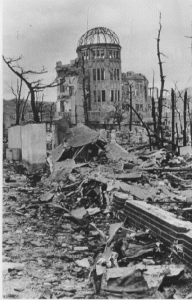

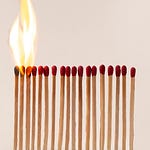
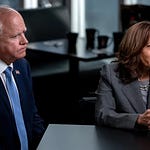

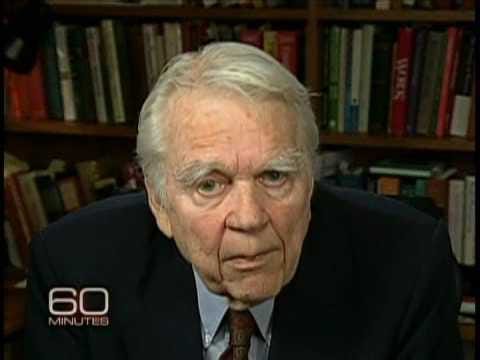

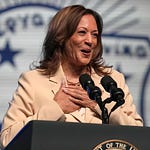
Share this post